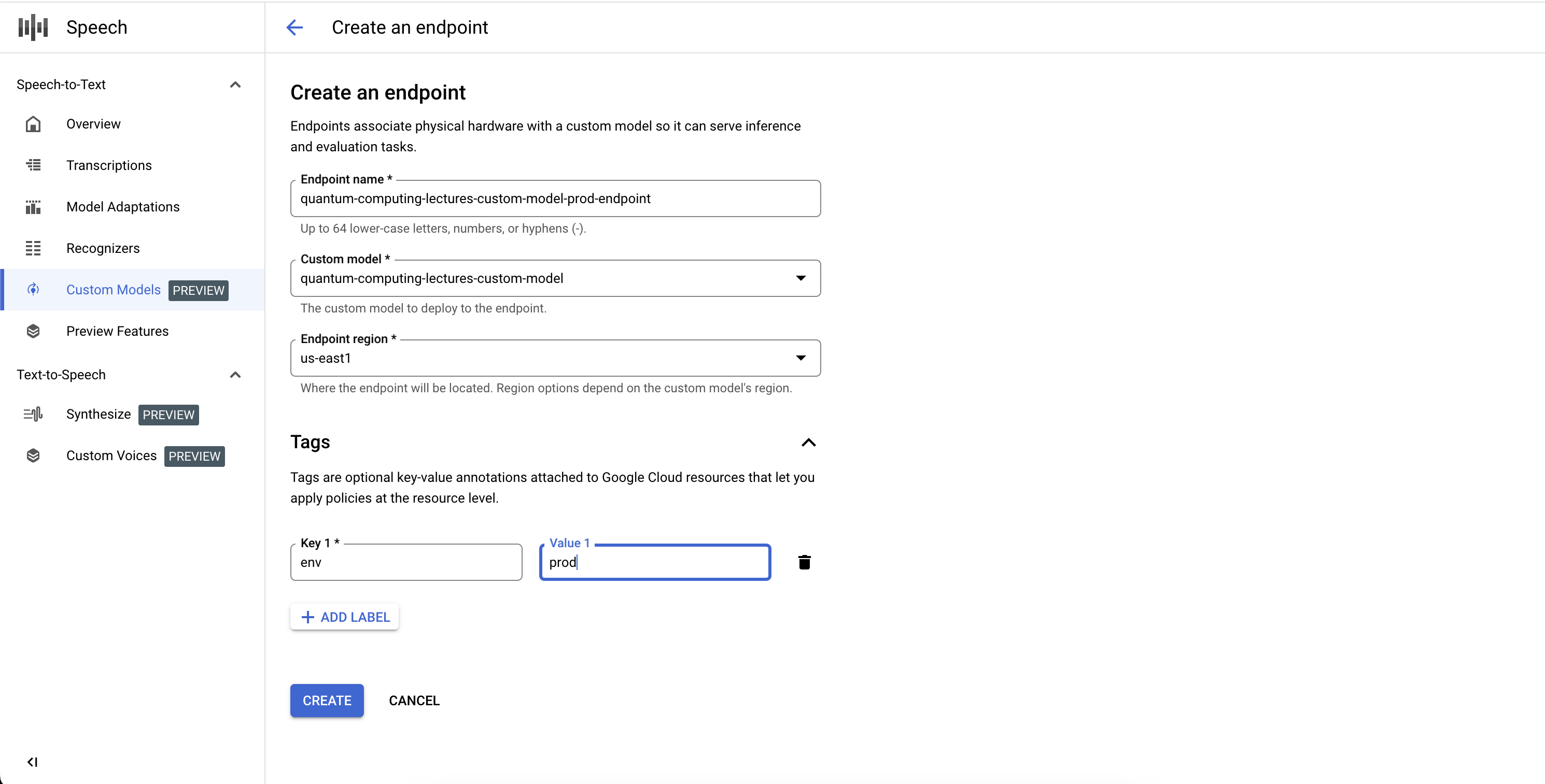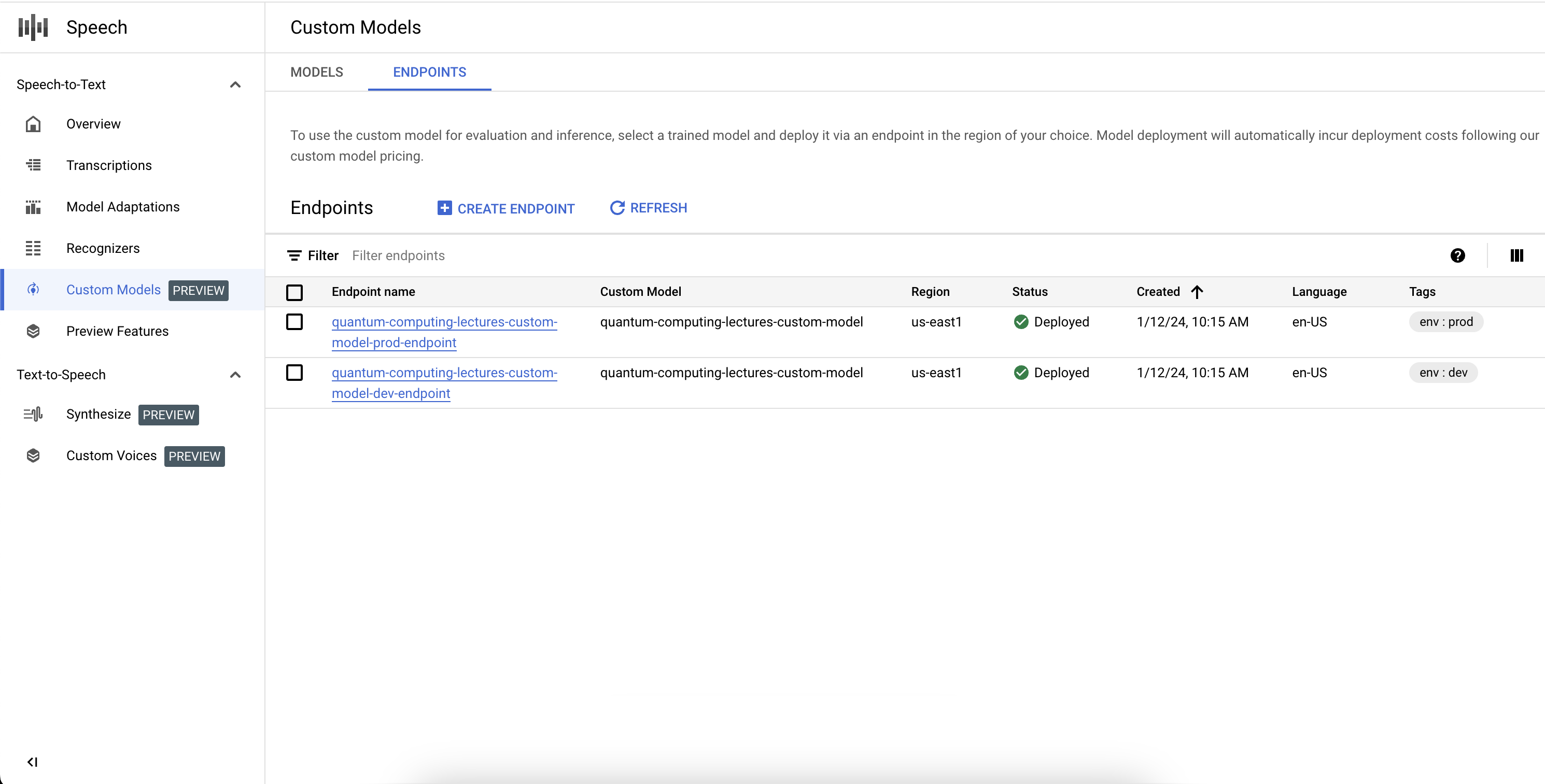Gunakan model Speech-to-Text Kustom terlatih dalam alur kerja benchmark atau aplikasi produksi Anda. Anda harus men-deploy dan mengekspos model melalui endpoint khusus, yang dibuat sebagian untuk men-deploy model di region yang Anda pilih. Anda akan otomatis mendapatkan akses terprogram melalui objek pengenal. ID ini digunakan langsung melalui API V2 atau di konsol Google Cloud . Anda dapat men-deploy model di region yang berbeda dari tempat model dilatih, tetapi salinan model akan dibuat di region yang ditentukan oleh endpoint.
Untuk menggunakan model ucapan kustom, Anda harus men-deploy dan mengeksposnya melalui endpoint khusus. Dengan membuat endpoint, Anda men-deploy model di region pilihan Anda. Anda akan otomatis diberi akses terprogram melalui objek pengenal untuk digunakan langsung melalui V2 API untuk inferensi atau di Google Cloud konsol.
Sebelum memulai
Pastikan Anda telah mendaftar ke akun Google Cloud , membuat project, dan melatih model ucapan kustom.
- Buka Speech di konsol Google Cloud , lalu buka Speech-to-Text.
- Buka bagian Model Kustom pada menu navigasi di sebelah kiri.
Membuat endpoint
- Buka tab Endpoint di bagian Custom Models.
- Klik Endpoint Baru.
- Tentukan nama endpoint Anda. Ini bertindak sebagai ID unik untuk resource endpoint Anda dan digunakan untuk memanggil model ucapan kustom Anda untuk inferensi.
- Tentukan region tempat Anda ingin men-deploy model ucapan kustom. Jika model dilatih di region yang berbeda dengan yang ditentukan di konfigurasi endpoint, salinan model baru akan dibuat secara otomatis.
- Pilih model ucapan kustom terlatih dari daftar yang ingin Anda tampilkan melalui endpoint.
- Klik Create dan setelah beberapa saat model ucapan kustom Anda di-deploy di endpoint, siap digunakan untuk inferensi dan tolok ukur.

Membuat daftar endpoint Anda
Anda dapat mengelola endpoint terkait di konsol dengan memilih tab Endpoints di bagian Custom Models. Anda juga dapat mencantumkan endpoint yang Anda buat di konsol, beserta status saat ini dan model Speech-to-Text kustom terkait.

Menghapus endpoint
Sebelum memulai, pastikan tidak ada traffic yang dirutekan melalui endpoint Anda, karena jika dihapus, endpoint tersebut tidak akan lagi menayangkan permintaan apa pun.
- Buka tab Endpoint di bagian Custom Models.
- Di tab Endpoint, klik untuk meluaskan opsi, lalu klik Hapus. Dalam beberapa saat, endpoint akan dihapus dan tidak lagi menyalurkan traffic.
Mengukur performa model
Dengan menggunakan model Speech-to-Text Kustom dan set data tolok ukur untuk menilai akurasi model Anda, ikuti panduan Mengukur dan meningkatkan akurasi.

